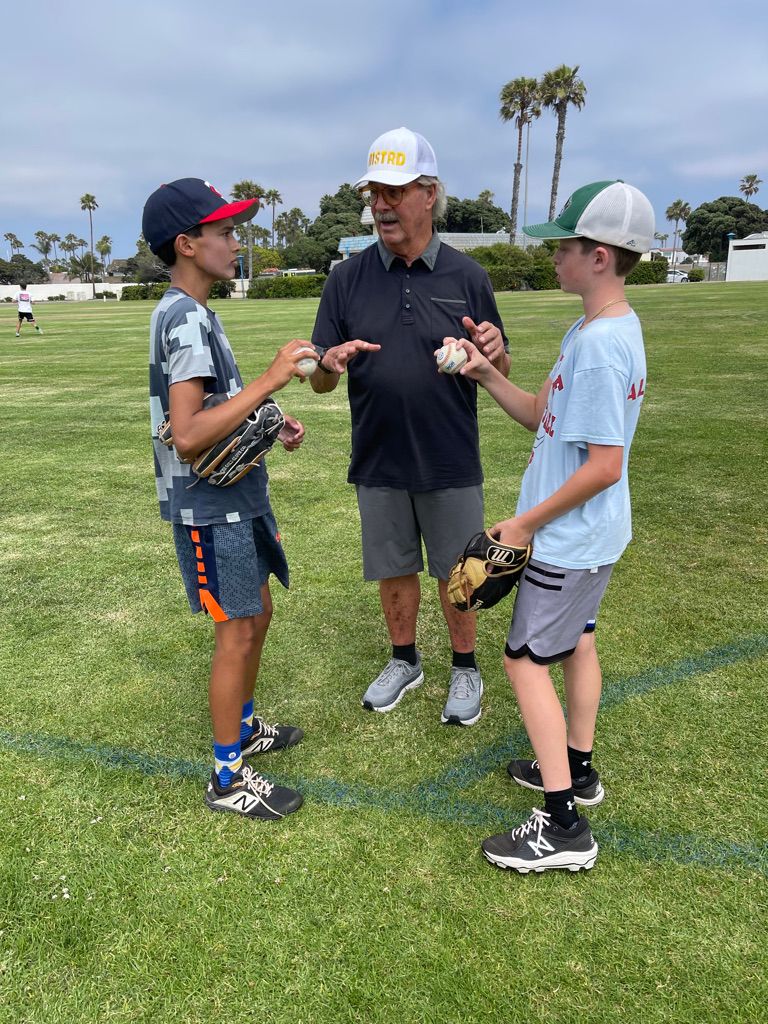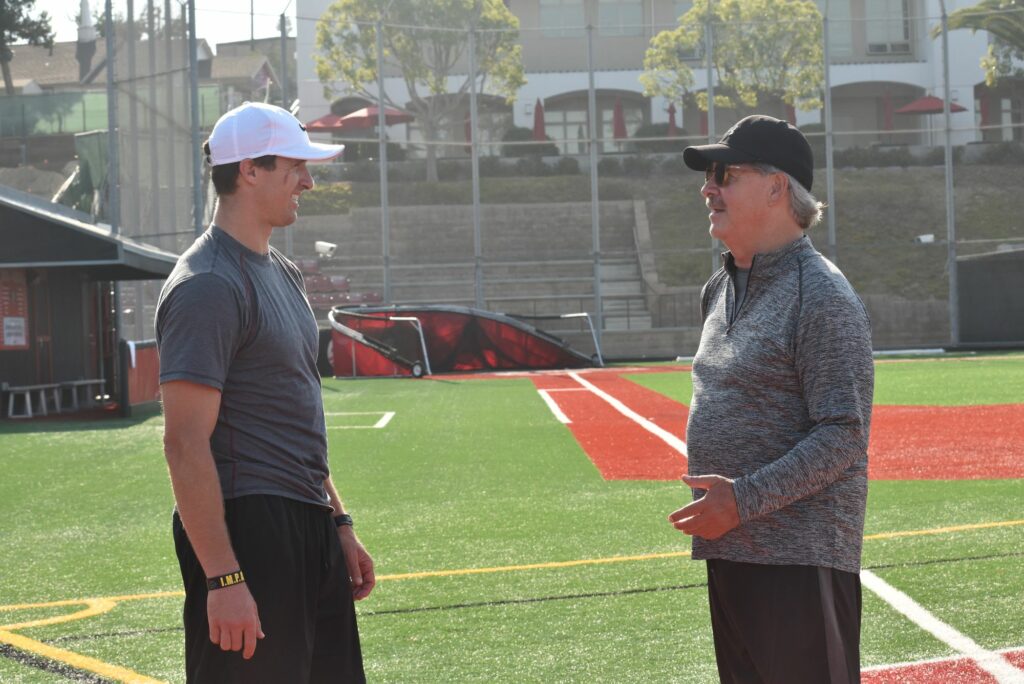By Tom House, PhD, with Lindsay Berra
I’ve been a baseball coach for more than 40 years, and I’m certain about one thing. As a coach, you have to put your ego aside. You must accept that nobody knows everything. One of the most powerful things you can do as a coach is admit that you were wrong, that you learned new information and made a change. If you don’t like what you were teaching six months ago, that’s a good thing, because when you get better, your athletes get better, too. You must accept that your actions can have a negative impact on your athletes. When athletes comes to the ballpark, they show up with X amount of motivation. Some have more than others, and you’ll never get more motivation out of them than what they show up with. But you can certainly drain the pool. The job of a coach is to never demotivate one of his athletes. Lastly, as a coach, you must be able to look in the mirror and say, honestly and earnestly, that the athlete comes first, that you will value process over outcome and that you will do everything in your power to use sports to improve the lives of your athletes. Here are some coaching tips that can benefit coaches everywhere.
Mission Statements, Goals, Objectives, Strategies and Tactics
A mission statement is something like, “Be the best Little League team in whatever area.” A goal is to win X number of games. Objectives are mini-goals that will give you a chance to win those games, and strategies and tactics are the day-to-day application and implementation of your efforts that keep you involved in process. There is no teenager out there who gives a hoot about three months from now. What matters is what we do today, and projecting forward to a potential outcome will only serve to demotivate.

Set Expectations
This is one of the most important coaching tips I can share. The number one way to keep kids motivated is to tell them what you expect and give them the time frame in which you expect it. If you do that, each kid will give you the best effort he or she can possibly give you. But if you have a practice that runs on forever and the kids have no idea what’s happening, you’re going to demotivate. If you’ll be with your team for 90 minutes, tell them how much time you’re devoting to warming up, to conditioning, to whatever skills and drills you’re working on, to batting practice, whatever, and make sure they know exactly what you expect from them during each part of the practice. Given those boundaries, kids can adjust. They become their own best coaches and will hold themselves accountable. They’ll think, “Oh no, I didn’t do everything I was supposed to do, how can I do better?” And if they understand what they’re supposed to do and what the process is, their effort will be greater than if they are just told randomly what to do. Play the game before the game, let the game happen, and then review when the athlete starts asking why.
Make Sure Every Kid Knows Their Role
This one is easy for your starters, but it’s equally important – if not more important – for the kids who aren’t playing. Make sure your back-up second baseman knows that if Jimmy at second base gets hurt, he or she has to be ready. If a kid is going to ride the bench, make sure he or she knows they are expected to help keep bats organized, pick up foul balls, keep the scorebook, press stop and record on the video camera, whatever. Everyone on the bench should have a specific duty to make sure they feel relevant to the team’s success, and that’s another very important coaching tip. Encourage everyone on the team to stay on the opposing pitcher without using bad words or saying anything off-color. It builds camaraderie. Successful coaches include everyone so no one feels left out. Sure, there are kids on the bench who have no chance of playing, but it’s your job as a coach to make sure it never shows in their morale.
Create a Learning Experience for Your Athletes
Sports teach kids four things: Affiliation, empathy, how to deal with adversity and how to learn from failure. There is no stigma attached to striking out with the bases loaded if you learn something from it. Remember, kids learn more from their failures than from their successes, and those who learn how to fail forward fast better than their peers are the ones you end up seeing on TV in the big leagues. Youth sports make kids realize the value, not of winning and losing, but of the process. It’s your job as a coach to make sure each kid gets all of those four things, and has fun doing it. That’s the power of play.
I’ve been making videos and writing books for decades.
40+ years later, I’m still learning the best ways to communicate.
Having answers means nothing if you can’t communicate them effectively to as many people as possible.
— Tom House 〽️ (@tomhouse) March 23, 2021
Learn to Personalize the Teach
There is an old saying, tell a ballplayer the same thing a hundred times, then tell him again, because that might be the one time he gets it. Well, I don’t agree with that logic. I’m with Einstein, who said doing the same thing over and over and expecting different results is the definition of insanity. So, here’s another valuable coaching tip: If you’re saying the same thing over and over again in the same way, or worse, just saying it louder, and your athletes aren’t getting it, you need to re-evaluate the way you communicate. Not everyone learns the same way, and there will be times when your style of coaching doesn’t register with half of your players. The sooner you as a coach can learn to understand your coaching style and assess the way your athletes learn from that style, the better you’ll be as a leader. A 14-year-old can’t reframe how he or she learns to meet the teaching style of the coach, so the coach must learn to reframe his teaching style when there is a glitch in the communication process so he or she can get information delivered to athletes in the most efficient and user-friendly way possible. To learn what kind of teacher and communicator you are and what you can do to adapt your teaching style to kids who learn differently, check out http://www.npasouth.com/mental/testing.html.
The Same Coaching Philosophies Apply at Every Level
The most successful managers in the big leagues have been those who had a roster full of guys whose learning style matched their coaching style. Dick Williams is a perfect example. He pushed his players hard and won two World Series with Oakland, but he was a tough manager and not everyone responded to that. When you have a team that matches your coaching style, you’re a winner, and when you don’t, you get fired, so it’s better for you as a coach if you can adjust that coaching style. Then there’s a guy like longtime Dodgers manager Tommy Lasorda, who had a gift for identifying talent and putting that talent where it could succeed. He was a genius at figuring out how to personally coach each individual player on his teams.
How to be a Great Coach:
Learn from the best athletes and coaches you can.
Take what they teach you and simplify.
Use and invest in the best technology you can.
Learn something new every day.
Study the best ways to communicate.
Listen.
Try to prove yourself wrong every day.— Tom House 〽️ (@tomhouse) April 9, 2021
Ask Your Athletes for Feedback
I believe in peer group review. When I was at the University of Southern California, when it came to cut time, I asked all my pitchers to evaluate the staff anonymously. There were usually around 20 guys who had come out for the 10 available jobs, and I had them all rate the group 1 – 20 from most talented to least talented, and from hardest working to laziest. Ask your kids in a nice way to evaluate who is the best player, who is the hardest worker, who they’d like to see come up in a particular situation. I would have the coaches do that, too, and the athletes always had a better idea of what was really happening. Coaches can get fooled by two or three guys on every team, and we have homogenized sports and confused effort with productivity, but the players themselves know who carries the mail and who doesn’t. And if you as a coach ever have to defend your choices to a higher-up or to parents who demand equal playing time, you can share your opinion, but having an anonymous player evaluation is always a great fallback.
Be Honest With Your Players
When Bobby Valentine was the manager of the Texas Rangers and I was the pitching coach, he would make me tell pitchers we were releasing them and why. It forced me to look a kid in the eyes and say, you didn’t make this ballclub, and it’s not because you can’t play in the big leagues, but because you can’t play for this team in the big leagues. It’s a hard thing to do, but they appreciate the honesty. You’re probably not going to be cutting a lot of kids from your Little League team until you get to the higher levels, but you still need to be able to look kids in the eyes and explain to them what their shortcomings are and what they need to improve. And this is as important for your studs as it is for the kids who don’t play, because every kid needs to understand that getting better is a lifelong process, on and off the field. And it’s your job as a coach to nicely point out the things he or she needs to work on, then offer solutions to keep them devoted to that process.
If you’d like more great content from Mustard, and you’d like to evaluate and improve your own pitching mechanics, download the Mustard pitching app today.








